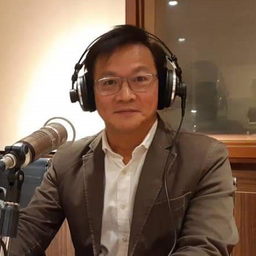How to preserve the relics of coal mines and use them for local revitalization - Take Xinpingxi Taiwan Coal Mine Museum as an example
My Session Status
What:
Paper
When:
10:00, الخميس 1 سبتمبر 2022
(20 minutes)
Where:
UQAM, pavillon J.-A. De Sève (DS)
- DS-1545
Abstract
The Pingxi area houses one of Taiwan’s main coal mines. Thus, a very complete industrial landscape and mining landscape were preserved along the Pingxi railway line. During the 1980~2000s, the production cost of coal mines in Taiwan was not competitive against the low-cost of imported coal. Therefore, the coal industry experienced a sharp decline in output resulting in massive job loss for the local population. Job loss also caused serious population aging and declining birthrate problems in the area.
Xinpingxi (XPX) Coal Mine is located in Pingxi District, New Taipei City, Taiwan Province, Republic of China. XPX Coal Mine was opened in 1965 and ceased production in 1997. It was transformed into a museum in 2002 and terminated its coal mining rights in 2019. XPX coal mine is the most intact coal mine industrial site in Taiwan.
The coalmine was a child company of Taiyang mining corporation, the largest mining company in Taiwan whom specialized in gold and coal mines excavation since 1920. XPX coal mine was the last company of Taiyang mining corporation to apply for coal mine excavation in Taiwan. Many mining machinery and facilities were then transported from other mines of Taiyang Company to XPX Coal Mine for continued use. This includes the Japanese manufactured 1937 and 1942 made Hitachi and Nichiyu Electric locomotives, these machines are still in operation for exhibition and tourism purposes.
Xingpingxi Coal Mine and the Tagawa city Coal Mining Historical Museum located in Tagawa, Fukuoka, Japan, were established as friendship museums in 2016, collaborating in cultural exchanges and research on the century-long mining cooperation between Taiwan and Japan.
Xinpingxi Coal Mine underwent regeneration planning with the government (Bureau of Cultural Heritage, MOC) in 2018 through conducting surveys of transportation routes and machinery in the region, reviewing historical records of coal mine railways and interviewing senior coal mine workers and citizens that still reside in the area that partook in the coal mining era. The coal mine also underwent management of industrial cultural asset paths, file map maintenance, digitization and hosted activities such as mining and machine repair learning activities, so that students are able to physically participate in and experience coal mining first hand. Investigation area and research for the regeneration plan include the horizontal tunnel, tracks outside the pit, the abandoned rock mountain system, the conveyor belt system, the coal washing plant and the railway system connected to the Pingxi reilway line. Xinpingxi Coal Mine also participated in the culture route of coal mining industry
conducted by Taiwan`s Ministry of Culture.
In 2019, Xinpingxi Coal Mine and the local government jointly participated in the planning of the local revitalization project, which is conducted by the National Development Council, Taiwan, where the coal mine can participate as a venue for changing the narrative for local residence in hopes of reshaping the interdependent relationship between mining areas and settlements. The goal is to drive local tourism and cultural activities and economic development through a re-utilization of the historical mining area.
